
I recently spent ten days in Italy’s marble city of Pisa. Even though it was the second half of December, it was surprisingly cold, with morning temperatures of about 0° C. Fortunately, it was dry and sunny with little in the way of wind—perfect conditions for running the Marathon, which was the principal reason for my visit.
I was somewhat worried that ten days were too many for a holiday in such a small place. After all, how long does it take to see the Leaning Tower of Pisa and the Duomo? But Pisa has many other attractions, and some of the neighbouring cities are only about twenty minutes away by train. Lucca, in particular, is well worth seeing and is small enough to be thoroughly explored in a single day.

Pisa’s straddles the River Arno about 50 km west of Florence. Although it now lies about 10 km inland, it was founded on the coast more than two millennia ago. Over the centuries, the Arno and the neighbouring River Serchio have created an alluvial plain to the west of the city, leaving Pisa landlocked.

The origins and early history of Pisa are still clouded in mystery. It is now thought that the city was founded by Etruscan settlers in the 5th century BCE, but the source of the name is still unknown. According to the ancient geographer Strabo, Pisa was founded by Nestor, king of Pylos, after the fall of Troy. A later scholar, the grammarian Maurus Servius Honoratus, claimed that the city was founded after the Trojan War by colonists from the Greek city of Pisa. But in 1991 archaeologists uncovered an Etruscan necropolis on the site of the Arena Garibaldi, the football stadium where A C Pisa 1909 play their home games.

Campo dei Miracoli
The most famous of Pisa’s attractions are conveniently clustered together in a large Piazza that has come to be known as the Field of Miracles. Here you will find four spectacular structures of white marble:
- The Campanile, or Leaning Tower of Pisa
- The Duomo, or Cathedral of Pisa
- The Baptistery of St John
- The Camposanto Monumentale, or Monumental Cemetery
The Leaning Tower

The iconic Leaning Tower was designed by Bonanno Pisano and constructed in several stages over a period of almost two hundred years (1173-1372). It is 56 m tall.

At the top are seven bells, tuned to a musical scale.

The interior is hollow:

And no account of the Leaning Tower would be complete without the iconic memes:

Pisa Cathedral
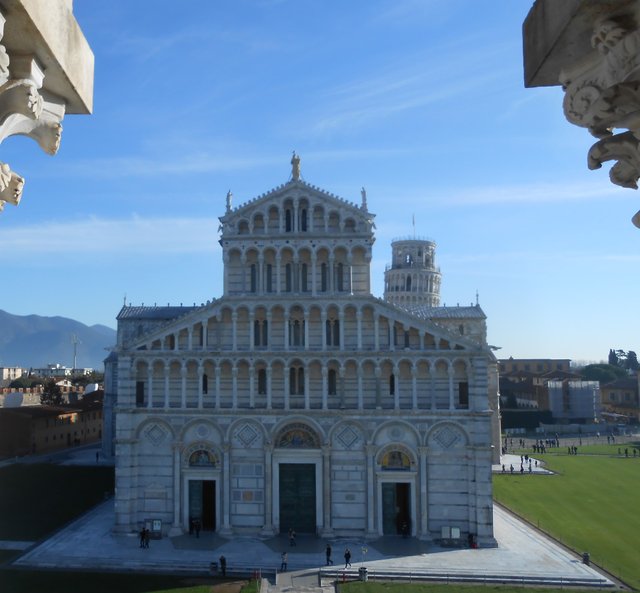
The Leaning Tower is almost overshadowed by the Cathedral of the Assumption of the Virgin Mary, a massive wedding cake of white marble. It was designed by the architect Buscheto and constructed between 1063 and 1092, but the original structure has been retouched by several hands, giving it an eclectic nature.
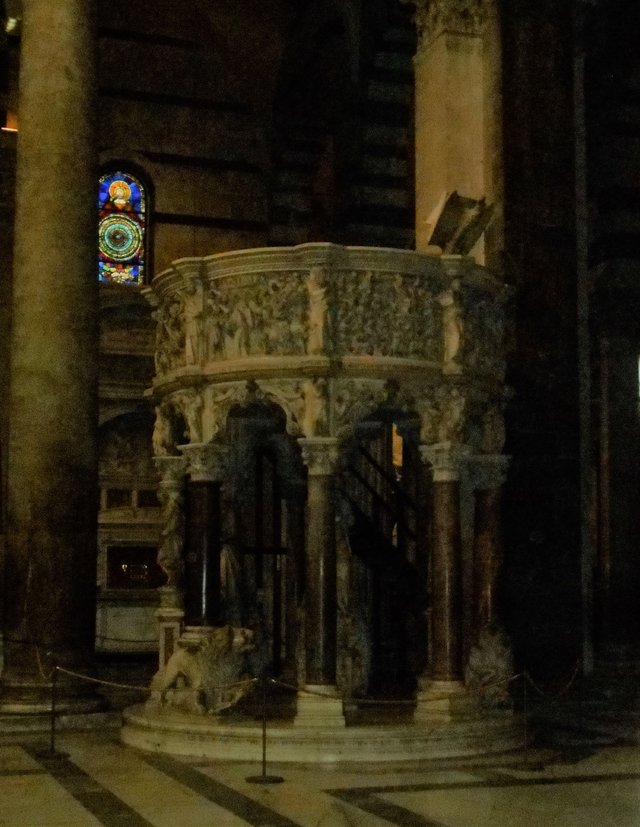
The jewel in the Cathedral’s crown is Giovanni Pisano’s pulpit. Following a fire in 1595, this Gothic masterpiece was dismantled and removed—as an eyesore, no less! It was rediscovered in a crate in 1926 and restored to its proper position.
The Baptistery of St John

As baptisteries go, this is quite a colossus. Its construction lasted from 1152 till 1363, after a design by Diotisalvi. Clearly, he did not want it to be overshadowed by the huge cathedral next door.

The pulpit was created by Nicolo Pisano (1255-60), the octagonal font by Guido Bigarelli da Como (1246), and the bronze statue of St John the Baptist by Italo Griselli (1929).

Camposanto Monumentale

The Camposanto was the last of the four Miracles to be constructed in the Piazza del Duomo. Work began in 1278 under architect Giovanni di Simone, but the cemetery was not completed until 1464. The marble oblong was allegedly built around a shipload of sacred soil from Golgotha, brought from the Holy Land by Ubaldo Lanfranchi, archbishop of Pisa and a participant in the Third Crusade.

The frescoes were added by several Renaissance artists in the 14th and 15th centuries. They were severally damaged when the structure was firebombed in July 1944 during an Allied raid. Restoration work continues today.
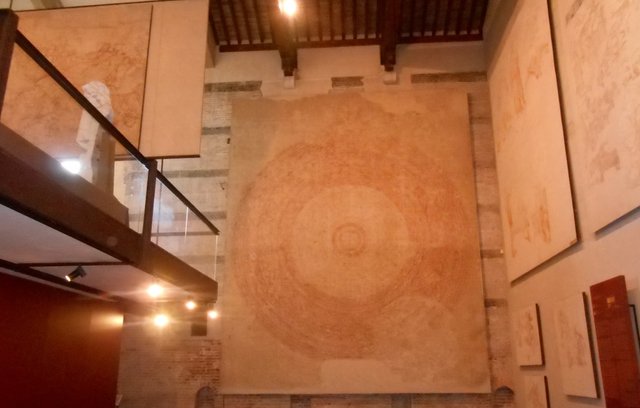
The sinopias, or preparatory sketches for the frescoes, were rescued from the fire-bombed Camposanto, are now on display in the Museo delle Sinopie, which is also situated on the Piazza del Duomo.

Pisa’s City Walls
Among the most remarkable attractions in Pisa are the medieval city walls, which encompass the historical centre of the city. They were built in the middle of the 12th century during the consulate of Cocco Griffi. They have a circumference of about 7 km and rise to a height of 11 m.
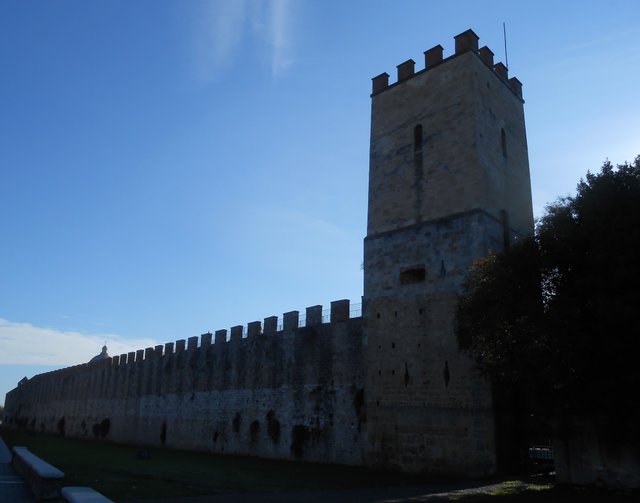
Unfortunately, the passeggiate, or public walkways on the walls, are not open in December. (I have heard that two sections are open from April through September, but I have not confirmed this.) Walking along the foot of the walls, however, is an excellent way of seeing the city. There are a few gaps and some sections where it is impossible to remain close to the walls, so you will have to be creative.

The oldest parts of the walls are comprised of panchina, a type of sandstone from Livorno. Overlying this is a greyish limestone from San Giuliano Terme. The pinkish-grey stone that forms the uppermost square blocks is a breccia from Asciano.

Over the centuries, the walls have accommodated more than twenty gates, but only about a dozen survive, and some of these are closed or in ruins.

Several of the towers (torre) that guarded the walls still exist. Some are in a poor state of repair, but a few are impressive to behold.

The Torre di Santa Maria, or Tower of the Virgin Mary, is one of the city’s best preserved towers.
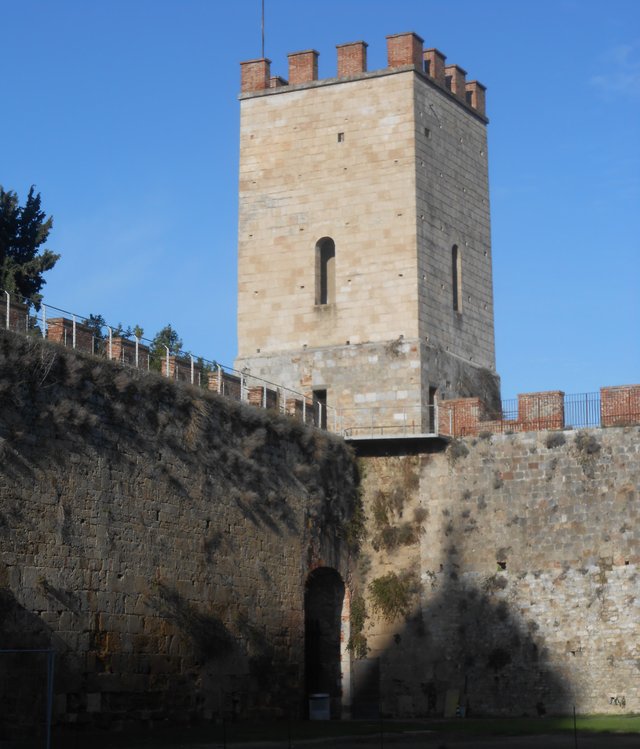
The Porta Nuova, or New Gate, was opened in 1562 by Cosimo I de’ Medici, at a time when Pisa was part of the Grand Duchy of Florence. It opens onto the famous Piazza del Duomo.

Other Sights in Pisa

The Casa Ammannati on Pisa’s Via Giuseppe Giusti, where Galileo Galilei is now believed to have been born on 15 February 1564. This was his mother Giulia Ammannati’s home.

The Guelph Tower was built by the Florentine rulers of Pisa in 1406. It was destroyed during an air raid in 1944—the same one that damaged the Camposanto—but after the War it was restored to its former state.

Pisa’s Botanic Gardens were first established in 1544 by Cosimo I de’ Medici under the auspices of the University of Pisa. In 1563 they were moved from their original location (now the site of the Medicean Arsenal on the Arno) to a site just south of the Piazza del Duomo.

The Medicean Aqueduct was built between 1588 and 1592 by Ferdinand I de’ Medici after designs by the architect Raphael Zanobi di Pagno. The aqueduct was meant to supply the city with fresh water from Asciano, but due to a design flaw, the water was stagnant by the time it reached the city. Consequently, another architect, Andrea Sandrini, was commissioned to redesign it. The necessary renovations were made between 1594 and 1613.

This diminutive rotunda at the intersection of the Via Emilia and the Via per Firenze is actually a church. It dates from the second half of the 15th century, and was built as a deprecation against an outbreak of the Plague.

The Knights’ Square, or Piazza dei Cavalieri, is one of Pisa’s best known landmarks.

There are too many fine churches in Pisa to include photos of them all. St Catherine of Alexandria’s Church is one of the most photogenic.

This piazza, dedicated to the Martyrs of Liberty, was laid out in the first half of the 19th century. The statue in the centre is of Pietro Leopoldo I, Grand Duke of Tuscany (1765-90), who is better known as the Holy Roman Emperor Leopold II.

The Church of St Stephen in Knights’ Square was designed by Giorgio Vasari.

The Cittadella Nuova, or New Citadel, was constructed by the Florentine rulers of Pisa in 1440.
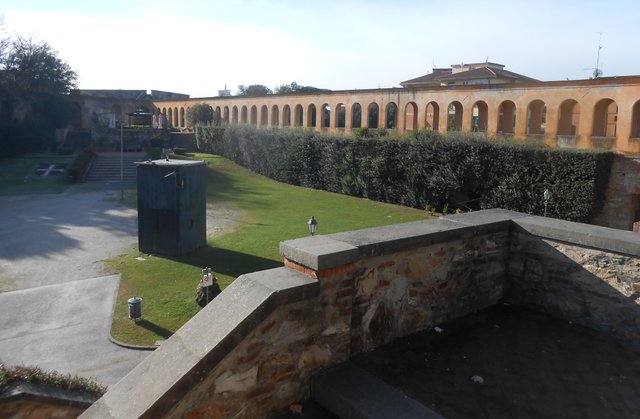
In the early 19th century, the landscape architect Giovanni Caluri transformed the interior of the New Citadel into a garden for the Livornese shipping-magnate, Domenico Scotto. Scotto’s Garden is now a public park.
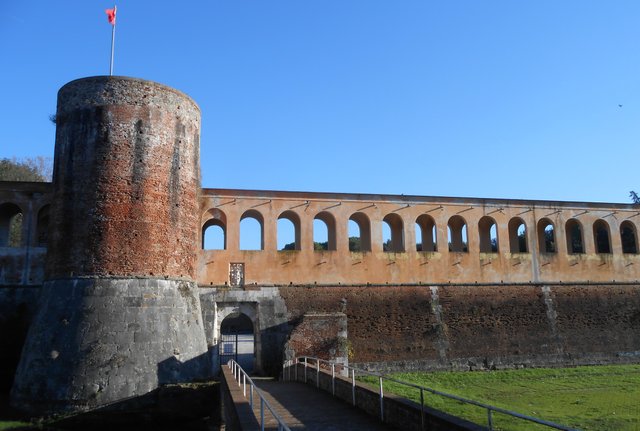
The exterior of the New Citadel, outside Scotto’s Garden.

Image Credits
- All photographs were taken by me and are in the Public Domain: Kopimi

wow, wonderful place and detailed article love it.
Downvoting a post can decrease pending rewards and make it less visible. Common reasons:
Submit
Thank you.
Downvoting a post can decrease pending rewards and make it less visible. Common reasons:
Submit
What a beautiful city! Thanks for sharing us some histrorical place in italy. Have a nice day. Enjoy your trip.
Downvoting a post can decrease pending rewards and make it less visible. Common reasons:
Submit
Thanks.
Downvoting a post can decrease pending rewards and make it less visible. Common reasons:
Submit
Pleasure.
Downvoting a post can decrease pending rewards and make it less visible. Common reasons:
Submit
Pleas after all the time you spent there, what did you bring for us?
Downvoting a post can decrease pending rewards and make it less visible. Common reasons:
Submit
I got you something really nice, but unfortunately it wouldn't fit in my suitcase! Too bad.
Downvoting a post can decrease pending rewards and make it less visible. Common reasons:
Submit
Excellent thanks for sharing with all so beautiful post an architecture and unique art the Italian is something fantastic to appreciate so splendid works of art greetings
Downvoting a post can decrease pending rewards and make it less visible. Common reasons:
Submit
You're welcome, and thank you for the kind comments.
Downvoting a post can decrease pending rewards and make it less visible. Common reasons:
Submit
Fantastic and very beautiful city very historical friend thank you for sharing with us so extraordinary post greetings
Downvoting a post can decrease pending rewards and make it less visible. Common reasons:
Submit
You're welcome. Thank you.
Downvoting a post can decrease pending rewards and make it less visible. Common reasons:
Submit
Very good are your publications and as you have not uploaded new content step by reviewing some of your previous posts, for example this publication seems very interesting and entertaining with regard to the leaning tower pisa. regards
Downvoting a post can decrease pending rewards and make it less visible. Common reasons:
Submit
Nice article even if I prefer livorno! ;-)
Downvoting a post can decrease pending rewards and make it less visible. Common reasons:
Submit
thanks for sharing such type of photography
@upvote done
Downvoting a post can decrease pending rewards and make it less visible. Common reasons:
Submit
The city is really beautiful . Tnks for sharing some histrorical place in itly. Enjoy your trip. Love you dude
Downvoting a post can decrease pending rewards and make it less visible. Common reasons:
Submit
wow..what a article!!just awesome.thanks brother
Downvoting a post can decrease pending rewards and make it less visible. Common reasons:
Submit
its an initiative post...admire a lot...
@upvote done..
Downvoting a post can decrease pending rewards and make it less visible. Common reasons:
Submit
wowwwww what a nice photography,, thanks for sharing such type of photo
Downvoting a post can decrease pending rewards and make it less visible. Common reasons:
Submit
Its nice photography
Thanks for sharing
upvote is done
Downvoting a post can decrease pending rewards and make it less visible. Common reasons:
Submit
nice place & good article dear..😍😍
Downvoting a post can decrease pending rewards and make it less visible. Common reasons:
Submit
Its my dream to visit the leaning tower
Downvoting a post can decrease pending rewards and make it less visible. Common reasons:
Submit